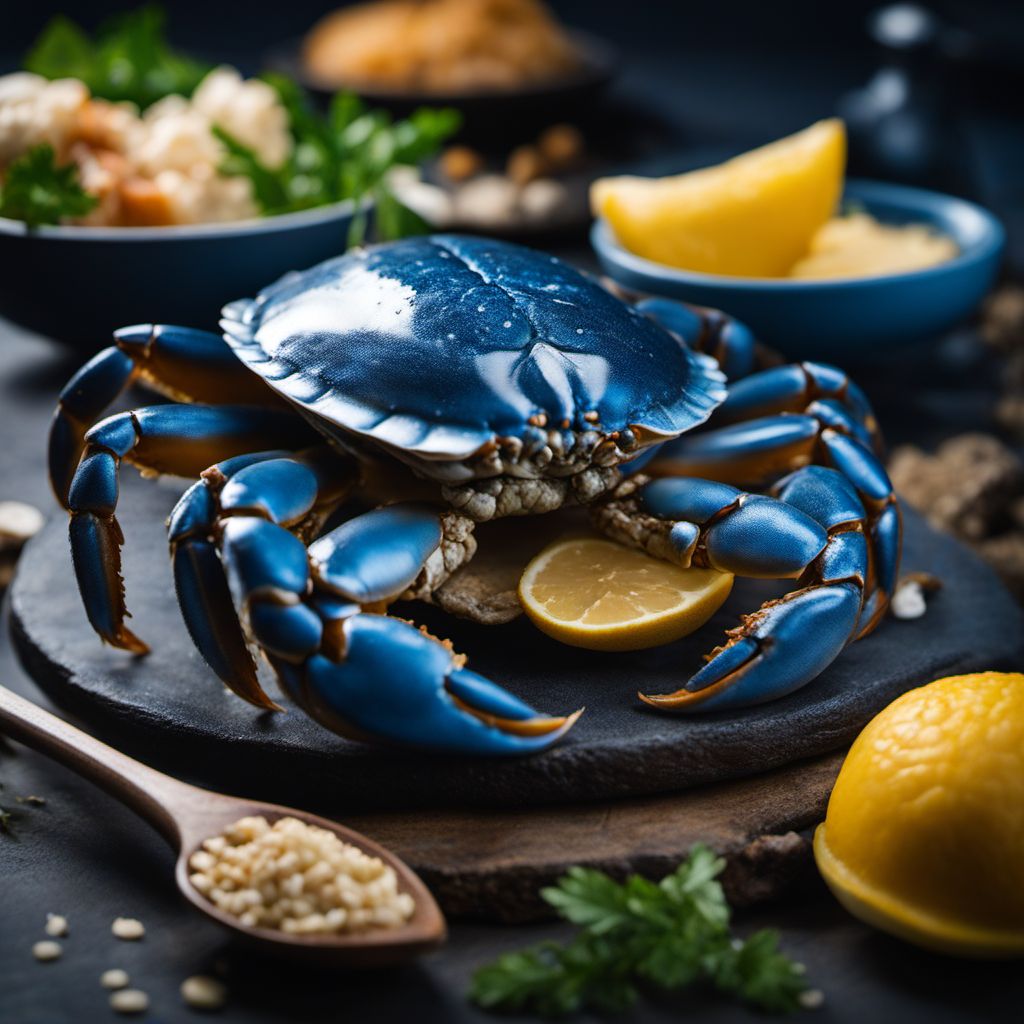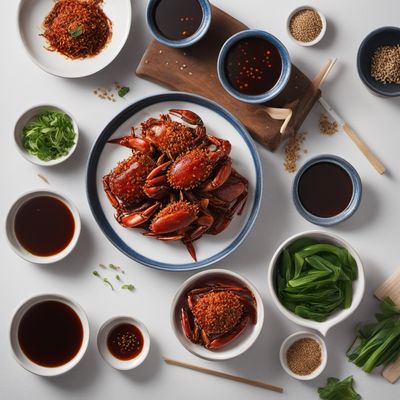
Ingredient
Blue crab
The Coastal Delicacy: Blue Crab
Blue crab, scientifically known as Callinectes sapidus, features a hard shell with hues of blue and green. The meat is tender, sweet, and has a slightly briny taste. The texture of blue crab meat is delicate and flaky, making it perfect for various cooking methods such as steaming, boiling, or grilling.
Origins and history
Blue crab is native to the Atlantic coast of North America and is particularly abundant in the Chesapeake Bay region. It has a rich history in the culinary traditions of coastal communities, where it has been harvested for centuries. Blue crab is deeply ingrained in the culture and cuisine of regions like Maryland and Louisiana, where it is celebrated as a local delicacy.
Nutritional information
Blue crab is a good source of lean protein and essential nutrients such as omega-3 fatty acids, vitamin B12, and selenium. It is low in calories and fat, making it a healthy choice for seafood lovers. However, it is important to note that blue crab can be high in cholesterol, so it should be consumed in moderation as part of a balanced diet.
Allergens
Blue crab may cause allergic reactions in individuals with shellfish allergies. It is important to exercise caution and consult with a healthcare professional if you have any known allergies or sensitivities.
How to select
When selecting live blue crabs, choose ones that are lively and active. Look for crabs that have a hard shell and feel heavy for their size. Avoid crabs with a strong ammonia smell or those that appear weak or lethargic. For pre-cooked or frozen blue crab, ensure that the packaging is intact and the product is within its expiration date.
Storage recommendations
To maintain the freshness of live blue crabs, store them in a cool and moist environment, such as a cooler with damp newspaper or a wet towel. It is best to cook live blue crabs as soon as possible after purchase. Cooked blue crab meat should be refrigerated and consumed within two to three days. Frozen blue crab can be stored in the freezer for up to six months.
How to produce
Blue crabs are typically caught in the wild, but they can also be farmed in controlled environments. To produce blue crabs, specialized aquaculture techniques are employed, including the use of hatcheries and nursery systems. The crabs are raised in tanks or ponds until they reach market size, which usually takes several months.
Preparation tips
Blue crab can be prepared in various ways, including steaming, boiling, grilling, or baking. To steam blue crabs, place them in a steamer basket over boiling water and cook for about 10 to 15 minutes until the shells turn bright red. For boiled blue crabs, add them to a pot of seasoned boiling water and cook for approximately 12 to 15 minutes. Grilled blue crab can be brushed with butter or marinade and cooked for a few minutes on each side. The meat can be used in dishes like crab cakes, crab bisque, or crab salads.
Culinary uses
Blue crab is a versatile ingredient that is widely used in coastal cuisines. It is commonly enjoyed steamed with Old Bay seasoning or boiled with a mix of spices. Blue crab meat is often used to make classic dishes like crab cakes, crab bisque, or crab salads. It can also be incorporated into pasta dishes, soups, or stir-fries to add a delightful seafood flavor.
Availability
Blue crab is commonly found along the Atlantic coast of North America, particularly in the Chesapeake Bay region. It is also harvested in other coastal areas of the United States, such as the Gulf of Mexico and the Carolinas. Blue crab is a popular seafood choice in regions like Maryland, Louisiana, and Virginia.
More ingredients from this category
Recipes using Blue crab

St. Louis Style Creamy Egg Custard with Local Seafood
Mississippi River Delight: Creamy Seafood Egg Custard

Peranakan-style Stuffed Crab with Crayfish
Nyonya Delight: Fragrant Stuffed Crab with Crayfish

Creamy Coastal Delight
Savory Seafood Symphony

Korean Spicy Soy Marinated Crabs
Fiery Delight: Korean Spicy Soy Marinated Crabs